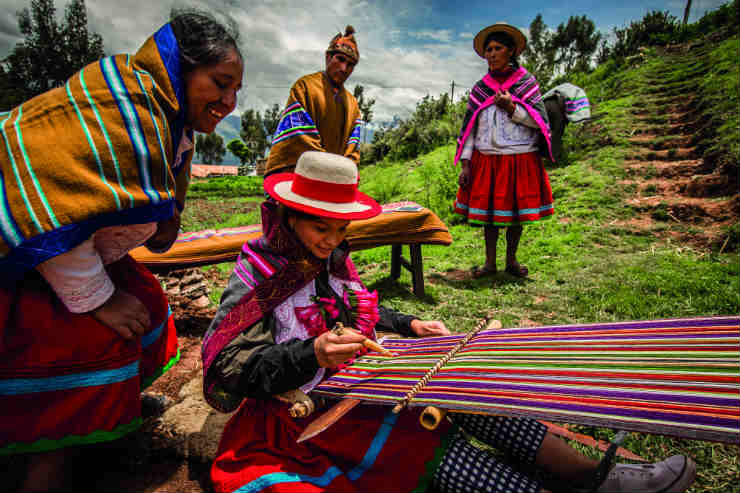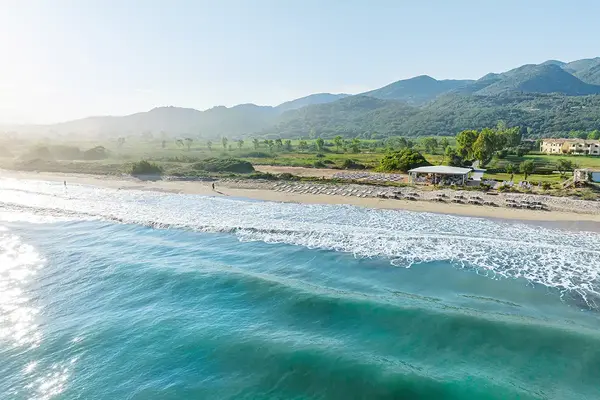‘Travel can no longer ignore the critical role of community-based tourism’
The pandemic opened our eyes to the need to invite another stakeholder to the table: local communities.
Mentions fill official reports by the World Tourism Organization, research from the World Travel and Tourism Council and recent declarations like The Future of Tourism, at the World for Travel Forum in Evora last year, we heard co-designing tourism with local communities should become the new norm.
This favourable set of intentions, though, is only the first step. As a majority, we still do not know how to work with them – especially considering we are often not even sure what we are talking about. "Community" is one of the most complex concepts we encounter in society, and in tourism it has recently entered the arena under a bright spotlight, but also a thick dust cloud.
But what if, in order to assist in the mission of building a more resilient and sustainable tourism industry, we reached out to organised collective tourism projects that already exist in-destination with the instinctive goal of guarding their embedded treasures?
Perhaps we should consider welcoming more community-based tourism (CBT) initiatives. These are tourism projects run by the community for the community. Or, in the words of Jamie Sweetie from Planeterra, those “owned, run and led by the community itself”.
While there are many small and large operators already working ethically with local communities – efforts that should be celebrated – CBT initiatives were always born in the community and are also designed and managed directly by their inhabitants, sometimes with the added support of external players.
For them, tourism should never become the main activity of a local community, as this risks being to the detriment of activities that are an inherent part of their identity. They therefore keep tourism as an additional activity with a specific functional role – to improve their well-being and living conditions.
Although its definition is straightforward and simple, the actual diversity of CBT initiatives worldwide is astonishing. Next to traditional communities of ancestral origin – such as the indigenous nations whose names are still unknown in Western society – there are rural communities descended from pre-Inca civilisation scattered over areas with a low population density.
There are also relatively modern groups with a strong ethnic identity, and a much "younger" history, such as the Caicaras or the Quilombolas in Brazil, which are settlements born after colonisation and the consequences of the slave trade.
So, next to communities thousands of years old, there are those with histories "only" a few centuries old, and others, such as the slums of Rio de Janeiro, established at the beginning of the 20th century and populated by the new labour force who migrated from poorer regions of Brazil to build the new city.
The contributions CBT projects are playing in terms of sustainable development are so critical they can’t be ignored for their massive contributions towards gender equality, diversity and inclusion.
Moreover, we can’t forget to mention the robust role they play in environmental conservation, both in terms of improving the state of the natural surroundings thanks to traditional farming technologies but also in terms of perfecting alternative solutions such as agro-ecology and perma-culture systems.
These represent locally found responses to the devastation suffered due to human intervention on the land or through the effects of climate change. Problems such as overtourism could be easily prevented, or fixed, through the consistent consultation with CBT projects, those I call "the innate sustainability experts".
‘Unique roots’
As a sector, we are finally learning that with our limited planetary resources, tourism needs to adapt and adjust to guarantee its impacts are never negative and are always, ideally, regenerative; CBT initiatives are great allies towards those goals, since their own existence depends on achieving them.
An additional, mainly undiscovered, value of this invisible universe of potential partners relies on the fact CBT projects enable the rediscovery of a destination under an enriched light.
Beyond the glamorous and standardised images of glossy tourism catalogues, there are the unique roots of a place that live through both the material and the immaterial cultural heritage embedded in the daily lives of the people that populate those lands.
When, and if, these communities decide to open their doors, their own CBT initiatives will show the visitors the direct paths to their essence and wisdom.
Through experiencing a multi-layered world of arts and crafts or farming and fishing techniques, they reveal to us their relations with the Earth and the symbiosis with its rhythms that only they have experienced and can pass on.
Those hidden roots emerge constantly in the local gastronomy, as well as in the ancestral stories – even in the notes of a song heard on a trail exploring of the endemic flora and fauna, whistled by a proud local community female guide.
Elisa Spampinato is a travel writer with a passion for community-based tourism. She focuses on rediscovering the roots and the soul of a tourism destination through the stories of its communities. She supports local tour operators with communication and marketing services, while helping strengthen their connection with local communities and improving their positive impacts at the grassroots level.
Sign up for weekday travel news and analysis straight to your inbox
Supplier Directory
Find contacts for 260+ travel suppliers. Type name, company or destination.














